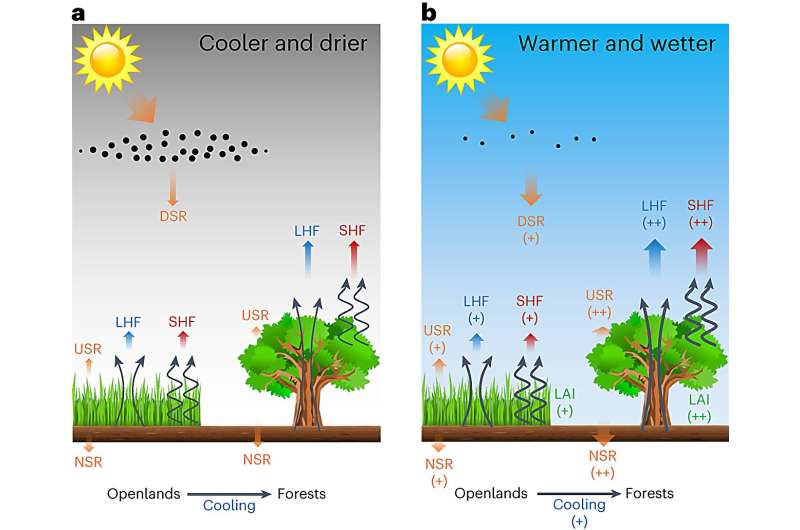August 30, 2023 report
This article has been reviewed according to Science X's editorial process and policies. Editors have highlighted the following attributes while ensuring the content's credibility:
fact-checked
peer-reviewed publication
trusted source
proofread
Climate models suggest curbing air pollution helps newly planted trees reduce local temperature

A team of meteorologists and atmospheric scientists at Nanjing University, in China, has found via modeling that planting trees in certain areas to reduce local temperatures is more effective if air pollution levels are reduced. In their study, reported in the journal Nature Geoscience, the group built climate models to measure estimated local temperature changes after planting trees with and without drops in air pollution levels.
Over the past several decades, pollution levels in regions of China rose dramatically as the country increased production of consumer goods to boost the economy. But China has become the target of criticism from other countries because of the impact of massive amounts of greenhouse gas emissions. In response, China has increased its use of renewable resources and has also begun replanting deforested areas.
In their work, the team in China investigated the most fruitful ways to reduce local temperatures around the country. To that end, they employed use of multiple emissions-scenario-based simulations to study how much temperatures can change in a given area under different parameters. Prior research has shown that reducing air pollution tends to increase local temperatures due to loss of the heat filtering effect of particulates in the air. Planting trees in some places, such as urban environments, has been found to induce a cooling effect as trees provide shade.
The research team found that despite reductions of particulate matter in the air from pollution level reductions, temperatures in local areas could still be reduced in conjunction with tree planting. This, they found, was because it allows more sunlight to reach the trees, which results in more growth and warmer, wetter conditions. As a forest grows, it gradually exhausts moisture into the air, and that results in more cooling.
The researchers found that reducing air pollution levels in addition to planting trees could reap bigger rewards—they found, for example, that doing so in some parts of the country could result in local cooling by 0.4°C compared to just planting trees.
More information: Jun Ge et al, Local surface cooling from afforestation amplified by lower aerosol pollution, Nature Geoscience (2023). DOI: 10.1038/s41561-023-01251-x
Journal information: Nature Geoscience
© 2023 Science X Network




















